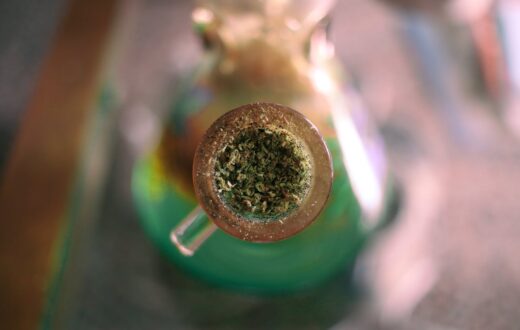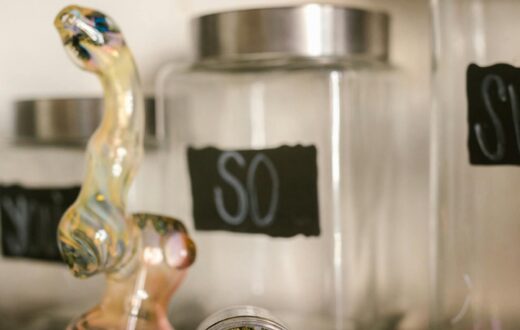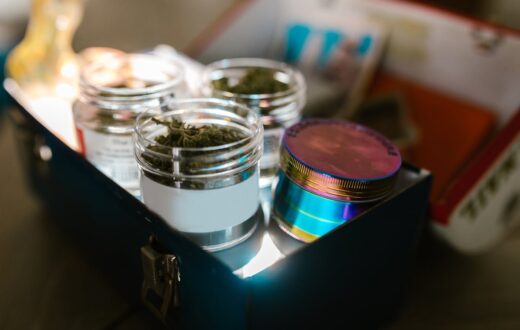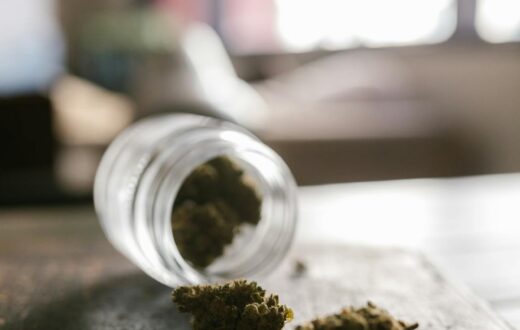Introduction to Blue Cookies Strain
The Blue Cookies strain, renowned within the cannabis community, is a hybrid variety that has gained significant popularity among both growers and users alike. This strain is the product of a remarkable lineage, stemming from the beloved Blueberry strain and the iconic Girl Scout Cookies. The combination of these two esteemed parent strains results in a complex flavor profile and well-rounded effects, appealing to a diverse range of users.
Originating from a lineage that includes award-winning strains, Blue Cookies showcases the vibrant fruity flavors of Blueberry, alongside the sweet, earthy undertones of Girl Scout Cookies. The genetics of this hybrid strain contribute not only to its enthralling aroma and flavor but also to its effects, which typically embody a balance of euphoria and relaxation. As a result, many cannabis enthusiasts seek to learn how to grow Blue Cookies strain so that they can enjoy its exquisite qualities firsthand.
This strain has made a mark in both recreational and medicinal cannabis sectors. Recreational users are attracted to Blue Cookies for its potential to produce uplifting and happy feelings. In contrast, those seeking relief from medical conditions may appreciate its ability to alleviate stress, anxiety, and pain. The balance of cannabinoids and terpenes in Blue Cookies makes it especially popular among those looking to experience therapeutic benefits while still enjoying a pleasurable high.
Overall, Blue Cookies stands out in a crowded market for its unique characteristics and lineage. With a combination of flavors that tantalize the palate and effects that satisfy both recreational and medicinal users, understanding how to grow Blue Cookies strain is essential for anyone looking to cultivate this noteworthy cannabis variety. A deeper exploration into the cultivation practices and growing requirements will reveal how to successfully nurture this beloved strain for maximum yield and quality.
Benefits of Growing Blue Cookies
The Blue Cookies strain has garnered considerable attention within the cannabis community due to its diverse benefits, making it an appealing choice for growers of varying experience levels. This hybrid strain boasts an impressive yield potential, enabling cultivators to obtain bountiful harvests in a relatively short timeframe. When cultivated under the right conditions, growers can expect dense, resinous buds that deliver a satisfying product.
One notable benefit of the Blue Cookies strain is its striking visual appeal. The buds typically exhibit a captivating array of vibrant colors, ranging from deep purples to rich blues and vivid greens. These colors are not only aesthetically pleasing but also indicative of its robust cannabinoid profile. Blue Cookies is renowned for its high levels of THC, which can be particularly beneficial for those seeking a potent experience, while also offering various therapeutic effects.
In addition to its attractive yield and cannabinoid profile, the Blue Cookies strain shows notable resilience against common pests and diseases. This strain has demonstrated good resistance to mold, mildew, and other potential threats, making it a suitable option for novice cultivators who may lack extensive experience in pest management. Even seasoned growers can appreciate the lower maintenance requirements attributed to this strain’s hardiness.
Furthermore, Blue Cookies provides a harmonious blend of relaxation and euphoria, allowing users to enjoy an elevated mood without overwhelming sedation. This balanced effect makes it appealing for both recreational and medicinal users. In conclusion, growing Blue Cookies not only promises high returns in terms of yield and visual allure but also presents an attractive, manageable option for cultivating cannabis. Its resilience and desirable effects further establish it as a top choice in the cannabis cultivation community.
Ideal Growing Conditions
When it comes to cultivating the Blue Cookies strain, understanding the ideal growing conditions is crucial for achieving optimal results. This strain flourishes best in environments that mimic its natural habitat. A temperature range of 70°F to 80°F (21°C to 27°C) during the day is essential, while nighttime temperatures should ideally drop slightly, between 65°F to 70°F (18°C to 21°C). Such temperature control ensures that the plants can grow vigorously without the stresses associated with extreme heat or cold.
Humidity levels play an equally important role in the growth of Blue Cookies. Seedlings and young plants thrive in higher humidity levels, typically around 60% to 70%. However, as the plants mature, it’s advisable to gradually reduce humidity to approximately 40% to 50% during the flowering phase. This decrease helps prevent mold and powdery mildew, which can be detrimental to the health of the plant.
Light is another critical factor; the Blue Cookies strain requires a good amount of light to grow efficiently. In indoor setups, providing at least 600-watt high-pressure sodium (HPS) or LED lights during the 18-hour light cycle of the vegetative phase will promote strong growth. During the flowering stage, light should be reduced to a 12-hour light/12-hour dark cycle, signaling the plant to begin the budding process.
In terms of soil, Blue Cookies performs well in well-draining soil enriched with organic matter. A mix that includes peat moss, perlite, and vermiculite offers excellent aeration and nutrient retention. Regular feeding with a balanced nutrient solution is also recommended, incorporating both nitrogen during the vegetative phase and phosphorus and potassium during flowering. Additionally, maintaining a consistent watering schedule, ensuring the soil is moist but not waterlogged, is vital in fostering a robust and thriving Blue Cookies plant throughout its growth cycle.
Germination and Seedling Stage
The germination and seedling stage is crucial in the cultivation of the Blue Cookies strain, setting the foundation for healthy plants. To initiate the germination process, growers typically employ techniques such as the paper towel method and direct planting. The paper towel technique involves placing the seeds between damp paper towels in a warm, dark environment, allowing for quicker germination. It is essential to keep the towels moist but not overly saturated, as excess water can lead to seed rot. Once the seeds develop a taproot, they can be carefully transferred to the growing medium.
In contrast, direct planting involves burying the seeds about half an inch deep in a nutrient-rich soil mix. This method is straightforward; however, it may require more patience as seeds take longer to sprout versus the paper towel technique. Whichever method you choose, providing the ideal environment is key to successful germination. A temperature range of 70-90°F (21-32°C) is most favorable for optimal results.
Once your Blue Cookies seeds have germinated and have begun to grow seedlings, attention must shift to the care of these young plants. Seedlings require abundant natural light, ideally 16-18 hours per day, to promote strong growth. Use full-spectrum grow lights if natural sunlight is insufficient. Watering should be done with care; keep the soil moderately moist without allowing it to become waterlogged. Overwatering can stunt growth and lead to root rot.
Furthermore, enriching the soil with organic amendments can provide seedlings with essential nutrients. Lightly incorporating worm castings or mycorrhizal fungi into the soil can bolster early growth. These practices, combined with proper light exposure and watering techniques, will significantly contribute to the robust development of your Blue Cookies plants in their early stages.
Vegetative Growth Phase
The vegetative growth phase is a critical period for the Blue Cookies strain, characterized by a focus on strengthening the plant’s structure and enhancing its overall health. During this stage, the primary aim is to encourage robust growth and prepare the plant for flowering. Proper cultivation practices are essential for maximizing yield and ensuring the plant develops adequately. One of the essential aspects is to provide adequate light, as the Blue Cookies strain thrives under bright and consistent light conditions. Aim for a light cycle of 18 hours on and 6 hours off to simulate optimal growing conditions.
In addition to light, implementing effective training techniques can significantly influence the growth of the Blue Cookies strain. Topping, a method where the main stem is cut just above a node, encourages branching and promotes a bushier plant structure. This not only enhances light penetration but also increases the number of potential bud sites, ultimately leading to greater yields. Conversely, Low-Stress Training (LST) involves gently bending and tying down the plant’s branches to create an even canopy. This approach allows for uniform light exposure across the plant, fostering more consistent growth and maximizing photosynthesis.
Feeding is another vital component during the vegetative phase. The Blue Cookies strain benefits from a balanced nutrient regimen that provides an adequate supply of nitrogen, phosphorus, and potassium. Additionally, incorporating micronutrients can help promote healthier growth. Monitoring factors such as pH levels in the soil is also crucial, as an optimal pH range will enable the plant to absorb nutrients more efficiently. Regularly inspecting the plant for any signs of deficiency or excess is paramount, as early intervention can prevent potential issues that may hinder the growth of the Blue Cookies strain.
Flowering Stage and Harvesting
The flowering stage is a crucial period in the growth cycle of the Blue Cookies strain, marking the transition from vegetative growth to the production of buds. During this phase, typically lasting 8 to 10 weeks, the plants will show significant changes in appearance and structure. Recognizing the signs of maturity is essential to optimize yield and quality, making it necessary for growers to understand what to look for as their plants progress.
One of the first signs that Blue Cookies is entering its flowering phase is the formation of small pistils, which appear at the nodes where the branches meet the main stem. As the weeks progress, these pistils will elongate and cluster together, eventually developing into dense, resin-coated buds. To promote maximum bud development, employing techniques such as defoliation and light manipulation can be beneficial. Defoliation involves strategically removing some of the fan leaves to improve light penetration to the lower parts of the plant, thus allowing for more uniform bud development. Additionally, adjusting light intensity and spectrum can significantly impact flowering progression and overall plant health.
Harvest timing is another critical factor influencing the quality of the final product. Observing trichome development is the most reliable method to determine the ideal time to harvest Blue Cookies. Initially, trichomes will appear clear, which indicates that the plant is not yet ready for harvest. As they transition to a cloudy or milky color, the potency peaks, signifying that the strain is approaching optimal harvesting time. Lastly, when a portion of the trichomes turns amber, a more sedative effect can be achieved, which some growers prefer. By closely monitoring these visual cues, cultivators can harvest Blue Cookies at the perfect moment to ensure maximum potency and flavor.
Drying and Curing Process
Once the Blue Cookies strain has been harvested, the subsequent drying and curing process plays a crucial role in preserving the flavor and potency of the buds. Proper execution of these steps not only affects the overall quality of the final product but also contributes significantly to the overall experience of consuming the strain. The initial phase, drying, requires careful attention to humidity levels, airflow, and duration.
To begin, it is vital to select an appropriate drying environment that maintains moderate humidity levels, ideally between 50% and 60%. High humidity can lead to mold growth, damaging the buds and compromising their quality. Conversely, too low humidity can cause the buds to dry too quickly, resulting in a harsh smoking experience. To control humidity, it is advisable to use dehumidifiers or humidifiers as needed. An efficient airflow within the drying space will also enhance the drying process; fans should be placed strategically to avoid direct airflow on the buds, which may cause uneven drying.
The typical drying duration for the Blue Cookies strain ranges from 7 to 14 days, depending on environmental factors. It is recommended to check for readiness by gently bending the stems; if they snap cleanly, it indicates that the drying process is complete. Following this, the curing process can commence, which is pivotal for improving the flavor profile and aroma of the buds.
Curing involves placing the dried buds in airtight containers, such as glass jars, which help to preserve essential terpenes and cannabinoids. It is essential to fill these containers only about three-quarters full to allow for airflow. Regularly check and “burp” the jars—opening them for a few minutes daily during the initial weeks—to release any accumulated moisture, ensuring a steady curing process, ideally lasting between 2 to 4 weeks, or longer for optimal results. Implementing these steps effectively teaches how to grow Blue Cookies strain with excellence.
Common Issues and Solutions
When cultivating the Blue Cookies strain, growers may encounter several common issues that can hinder the performance and health of their plants. Being aware of these potential problems and knowing how to address them is crucial for a successful harvest. Among the most frequent challenges are nutrient deficiencies, pest infestations, and environmental stress. Each of these factors can significantly impact the vitality of the plants and their overall yield.
Nutrient deficiencies often manifest with yellowing leaves or stunted growth, indicating that the plants are not receiving the essential nutrients they require. For the Blue Cookies strain, a balanced nutrient regimen is vital, particularly during the flowering stage. Ensuring that your plants receive adequate nitrogen, phosphorus, and potassium, as well as micronutrients like calcium and magnesium, can mitigate these deficiencies. Regular soil testing can help identify the specific nutrients that need to be supplemented.
Pest infestations can also pose a significant threat to the health of Blue Cookies plants. Common pests, such as spider mites, aphids, and whiteflies, can weaken plants and reduce yield. Implementing preventative measures, such as maintaining cleanliness in the grow area and using organic insecticides, can help keep these pests at bay. Additionally, introducing beneficial insects like ladybugs can provide natural pest control without harming the plants.
Environmental stressors, including inadequate lighting, temperature fluctuations, or humidity extremes, can adversely affect the Blue Cookies strain. Maintaining optimal growing conditions—ideally, temperatures around 70-80°F during the day and 60-70°F at night, along with humidity levels of 40-60%—is essential for preventing stress. Employing environmental controls like timers and hygrometers can help ensure a stable growth environment, yielding resilient and productive plants.
Final Thoughts and Tips for Success
Growing the Blue Cookies strain can be a rewarding experience, provided you follow best practices throughout its lifecycle. This strain, known for its vibrant colors and rich flavors, requires a careful balance of attention and adaptability. One of the foremost tips for success is to maintain a consistent environment. Blue Cookies flourishes under stable temperature and humidity levels, so be diligent in monitoring these factors. Aim for a temperature range between 70°F and 80°F during the day, and 60°F to 70°F at night, ensuring that humidity levels stay around 40-50% during the vegetative stage, adjusting to 30-40% during flowering.
Observation plays a crucial role in the growth of Blue Cookies. Regularly check for any signs of nutrient deficiencies, pests, or diseases. This proactive approach allows for early interventions, whether that involves adjusting the nutrient mix or implementing pest control measures. Given the strain’s tendency toward sensitivity to over-fertilization, begin with half-strength nutrients and gradually increase as needed. The right feeding regimen is essential to encourage healthy growth and yield robust flowers.
Moreover, be prepared to make adjustments based on the strain’s response to your growing conditions. Each plant may exhibit different growth patterns, and what works for one may not work for another. Flexibility and attentiveness are key attributes in successfully cultivating Blue Cookies. Finally, always remember the importance of patience; cannabis cultivation is a journey. The flowering period can take 8 to 10 weeks, and allowing your plants the time they need can significantly enhance the quality of the final product.
In conclusion, applying these tips while staying dedicated to the cultivation process will significantly increase your chances of success with the Blue Cookies strain. Not only will you enjoy the satisfaction of nurturing your plants, but you will also appreciate the exceptional flavors and aromas they produce. Happy growing!














